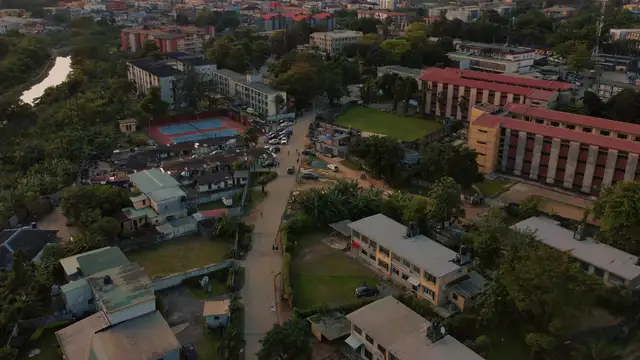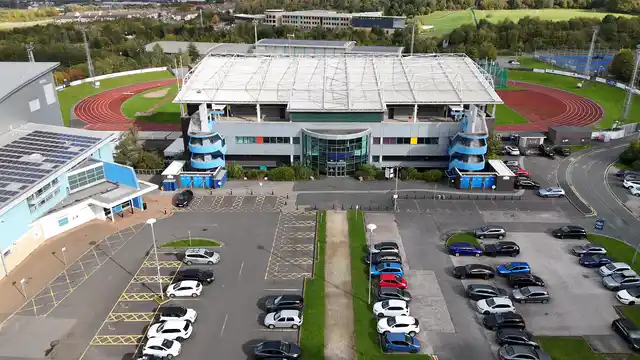Introduction
The Charlotte Metropolitan Statistical Area (MSA) is a bustling urban hub in the southeastern United States, straddling North and South Carolina. With a core city—Charlotte—this area has grown remarkably over the years, becoming the largest metropolitan region in the Carolinas.
Once regarded as just a small Southern city, Charlotte has transformed into a financial powerhouse. Today, it boasts the second-largest banking center in the nation, trailing only New York City. This growth has attracted diverse populations, making it a melting pot of cultures and opportunities.
In this article, we’ll take a closer look at the Charlotte MSA. We’ll explore its demographics, economic significance, educational institutions, transportation systems, attractions, and historical trends. Whether you’re considering moving here, visiting, or just curious, this comprehensive guide has you covered!
Overview of the Charlotte Metropolitan Statistical Area
Geographic Location and Boundaries
The Charlotte MSA, also known as Metrolina, encompasses a sprawling area of approximately 3,198 square miles, which includes both urban and rural regions. It primarily covers parts of North Carolina and South Carolina, showcasing a blend of suburban neighborhoods and scenic landscapes.
The core city is Charlotte, but the MSA also includes several key counties: Mecklenburg, Cabarrus, Gaston, Iredell, Lincoln, Rowan, and Union in North Carolina. In South Carolina, York, Chester, and Lancaster counties are part of this dynamic region. Each of these counties brings its unique flavor, from bustling suburbia to charming small towns.
Demographics
As of 2023, the Charlotte MSA is home to approximately 2.8 million residents, making it the 22nd largest metropolitan area in the U.S. This figure reflects significant growth, as the population has nearly doubled since 1990.
A closer look at the demographics reveals a vibrant and diverse community. The population is comprised of about 56% White, 20% Black or African American, 4% Asian, and 18% identified as belonging to two or more races or other ethnic groups.
Age distribution indicates a youthful population, with a substantial percentage under 18 years old, contributing to the area’s vitality. The MSA’s growth can be attributed to a mix of natural population increase and migration, as people flock to Charlotte for its robust economy and high quality of life.
In summary, the Charlotte Metropolitan Statistical Area is not just a geographical location; it’s a thriving community full of opportunities, diversity, and a bright future. As we continue this guide, you’ll discover more about what makes this area a great place to live, work, and play!

Economic Significance
Major Industries and Employers
Charlotte is not just a city; it’s a financial titan! As the second-largest banking hub in the United States, right after New York City, it proudly hosts the headquarters of major financial institutions like Bank of America and Truist Financial. These giants contribute significantly to the local economy, employing thousands and attracting talent from all over.
But it’s not all about banking. Charlotte’s economy thrives on a diverse portfolio. The manufacturing sector plays a crucial role, with companies producing everything from automotive parts to textiles. In recent years, the technology industry has also taken root here, fostering innovation and job creation. Information technology firms are popping up like daisies, enhancing the city’s reputation as a tech-friendly locale.
Additionally, the healthcare industry is booming. Major hospitals and healthcare systems, including Atrium Health, have established a strong presence, providing essential services and jobs. This blend of finance, manufacturing, technology, and healthcare makes Charlotte’s employment landscape robust and resilient.
Speaking of resilience, if you’re looking to improve your home office setup, consider investing in some stylish and functional home office furniture. A comfortable workspace can boost productivity and help you tackle those never-ending Zoom calls with a touch of style.

GDP and Economic Growth
As of 2022, the Charlotte metropolitan area boasts a whopping GDP of approximately $228.9 billion. This figure is not just a number; it represents a thriving economy with substantial growth potential. The implications of such economic strength are profound. A growing GDP often correlates with increased job creation, leading to higher living standards for residents.
In recent years, Charlotte has consistently ranked as one of the fastest-growing metropolitan areas in the U.S. This growth isn’t just a statistic; it’s a reflection of new businesses opening, existing ones expanding, and a steady influx of residents seeking opportunities. As more jobs become available, the local economy flourishes, enabling families to enjoy a better quality of life.
Furthermore, this economic vitality has attracted a diverse population, enhancing the city’s cultural fabric. As more people move to the area for work, they contribute to the local economy through spending, which, in turn, stimulates further growth.

Cost of Living
Charlotte’s cost of living is another factor that draws people to the area. Compared to national averages, the cost of living in Charlotte is quite reasonable. Housing, in particular, is more affordable than in many other major cities. The median home price is competitive, making homeownership a realistic goal for many.
However, like any growing city, the demand for housing has increased, leading to rising prices in certain neighborhoods. Areas closer to the city center, with their bustling amenities and vibrant culture, often see higher costs. Yet, with a variety of neighborhoods available, from urban apartments to suburban homes, there’s something for everyone.
Other costs, such as groceries and transportation, remain manageable, making it easier for families and individuals to thrive without breaking the bank. As Charlotte continues to grow, the balance between housing affordability and economic opportunity remains a key consideration for potential residents.
In summary, Charlotte’s economic significance is highlighted by its diverse industries, impressive GDP, and relatively low cost of living. This dynamic environment not only fosters job growth but also attracts newcomers looking to take advantage of the myriad opportunities that this vibrant metropolitan area has to offer. The future looks bright for Charlotte, promising continued expansion and prosperity for all who call it home.
Transportation Infrastructure
Public Transportation
Navigating the bustling Charlotte Metropolitan Statistical Area (MSA) is a breeze, thanks to the Charlotte Area Transit System (CATS). This public transportation network offers a mix of bus and light rail services, making commuting as smooth as butter on warm toast.
CATS operates buses that crisscross the city and surrounding suburbs, connecting residents to key destinations. With routes that serve over 7 million riders annually, catching a bus is often the easiest way to navigate the urban jungle. Buses run frequently, so whether you’re heading to work or grabbing a bite, you won’t be left waiting long.
But wait, there’s more! The light rail system, known as the Lynx, is a shining star in CATS’ lineup. The Blue Line runs from the University of North Carolina at Charlotte to the city center, making it a popular choice for students and professionals alike. With its sleek trains and convenient stops, the light rail is not just a mode of transportation; it’s an experience!
And let’s not forget about Charlotte Douglas International Airport! This bustling airport holds the title of the seventh-busiest in the world, serving as a major gateway for domestic and international travel. With flights to over 175 destinations, it’s the perfect launchpad for adventures near and far. Whether you’re jetting off for business or pleasure, you’ll appreciate the ease of access this airport provides.
In conclusion, public transportation in the Charlotte MSA is efficient and convenient, blending buses and light rail seamlessly to connect people to their daily destinations. Combined with the impressive Charlotte Douglas International Airport, the region boasts a robust transportation network that supports its vibrant community.

Higher Education Institutions
Major Universities and Colleges
The Charlotte Metropolitan Statistical Area is home to several esteemed higher education institutions that play a pivotal role in shaping the local economy. At the forefront is the University of North Carolina at Charlotte (UNCC), which boasts a diverse student body and offers a wide array of academic programs. With over 30,000 students enrolled, UNCC brings energy, innovation, and talent to the region.
Another key player is Davidson College, a prestigious liberal arts college known for its rigorous academics and vibrant campus life. Davidson attracts top-tier students from across the country, contributing to the area’s intellectual capital. The impact of such institutions is profound, as they foster a skilled workforce and stimulate local businesses.
These universities and colleges do more than educate; they drive economic growth. They attract research funding, promote innovation, and provide employment opportunities for thousands. Local businesses often collaborate with these institutions, leading to internships, job placements, and community engagement.

Community Colleges
Community colleges also play a crucial role in the educational landscape of the Charlotte MSA. Central Piedmont Community College (CPCC) stands out as a vital resource for vocational training and workforce development. With a focus on practical skills, CPCC prepares students for high-demand careers in fields like healthcare, technology, and manufacturing.
CPCC offers flexible programs and courses tailored to the needs of the community, making education accessible to all. This commitment to vocational training ensures that the local workforce is equipped with the skills necessary to thrive in a competitive job market.
In summary, the higher education institutions in the Charlotte MSA are powerhouses of economic and workforce development. From major universities like UNCC and Davidson College to essential community colleges like CPCC, these institutions contribute significantly to the region’s growth, innovation, and prosperity. The synergy between education and the workforce fosters a dynamic environment, making Charlotte an attractive place to live, work, and study.

Attractions and Lifestyle
Cultural Attractions
The Charlotte Metropolitan Statistical Area (MSA) is a vibrant tapestry of cultural experiences. Art lovers will delight in the local galleries and museums. The Mint Museum is a must-see. It showcases American, contemporary, and European art. Meanwhile, the Bechtler Museum of Modern Art is a haven for modern enthusiasts. With its stunning collection, it turns heads and raises eyebrows.
Speaking of museums, why not consider a Mint Museum Membership? It offers unlimited access to exhibitions and special events. Perfect for the art aficionado in your life!
The area also hosts thrilling cultural festivals. The annual Charlotte Jazz Festival celebrates the city’s rich musical heritage. Meanwhile, the Taste of Charlotte offers a delicious journey through local cuisine. There’s something for everyone, from foodies to music aficionados.
And let’s not forget the NASCAR Hall of Fame. This attraction pays homage to the fast-paced world of NASCAR racing. It’s a thrilling experience filled with history, exhibits, and interactive displays. If you’re a racing fan, this is your playground.
Local art districts, like NoDa and South End, are buzzing with creativity. They feature murals, studios, and unique shops that capture the spirit of the city. NoDa is known for its eclectic vibe and vibrant nightlife. South End, on the other hand, offers a mix of art, dining, and shopping that leaves visitors enchanted.

Outdoor Activities
For nature enthusiasts, Charlotte has plenty to offer. The U.S. National Whitewater Center is a premier destination for outdoor adventure. You can kayak, paddleboard, or simply enjoy hiking and biking trails. The center hosts thrilling whitewater rafting experiences that will get your adrenaline pumping.
Speaking of adventure, make sure you have the right outdoor adventure gear like a kayak or paddleboard to make the most of your visit. You don’t want to miss out on the splashes and excitement!
Parks such as Freedom Park and Romare Bearden Park provide beautiful spots for leisurely strolls or family picnics. Freedom Park, with its picturesque lake and sports facilities, is a favorite among locals. Romare Bearden Park, located in the heart of the city, features stunning gardens and vibrant art installations.
The area is also rich in nature reserves, like the Carolina Raptor Center. Here, you can learn about and see birds of prey up close. It’s a great way to connect with wildlife and appreciate nature’s wonders.

Sports Scene
Charlotte loves its sports! The professional teams here are the Carolina Panthers and the Charlotte Hornets. The Panthers, part of the NFL, bring excitement every fall. Fans don their blue and black, filling Bank of America Stadium with energy. The atmosphere is electric, especially during home games.
On the hardwood, the Charlotte Hornets take center stage. They play at the Spectrum Center, where the buzz of the crowd is contagious. The NBA experience here is vibrant, showcasing thrilling games and entertaining performances.
Want to show your team spirit? Check out some awesome Charlotte Hornets merchandise to flaunt your fandom during the games!

Historical Population Growth and Trends
Historical Context
The population growth in the Charlotte Metropolitan Statistical Area has been nothing short of remarkable. Starting in the 1950s, the area had around 197,052 residents. By 1960, that number jumped to 272,111, showcasing a 38% increase. This trend continued throughout the decades.
In 1970, the population soared to 409,370, reflecting a 50% growth. Fast forward to 1980, and the population reached 637,218, an impressive 55.7% increase. The 1990 census recorded a staggering 1,162,093 residents, marking an 82.4% growth from the previous decade.
The new millennium saw continued growth. In 2000, the population hit 1,499,293. By 2010, it had risen to 2,243,960, reflecting a 49.7% increase. The most recent data from 2020 shows a population of 2,660,329, with 2023 estimates reaching approximately 2.8 million.
Factors contributing to this growth include migration and urban development. Many people are drawn to Charlotte for its job opportunities and quality of life. The robust economy and diverse communities continue to attract new residents, ensuring that the city remains a thriving hub.

Future Projections
Looking ahead, the Charlotte MSA is expected to continue its growth trajectory. With job opportunities increasing and the area’s appeal as a livable city, more people will likely choose to call it home. As the economy expands and new businesses emerge, the population will inevitably rise. This vibrant city is poised for a bright future, full of promise and potential.
The Charlotte Metropolitan Statistical Area is on a growth trajectory. Current trends indicate that its population will continue to rise, fueled by an influx of new residents and burgeoning job opportunities. By 2030, projections suggest that the MSA’s population could surpass 3 million, thanks to ongoing migration and a robust local economy.
Factors driving this growth include Charlotte’s reputation as a financial hub, offering ample job prospects. With major employers like Bank of America and Truist Financial leading the charge, the job market remains attractive. The tech industry is also making its mark, with startups and established companies alike setting up shop in the region.
Additionally, the area’s quality of life appeals to many. Access to parks, cultural attractions, and a vibrant dining scene makes it a desirable place to live. The ongoing development of infrastructure, including transportation systems and housing, supports this growth. As the region expands, its suburban areas are becoming increasingly popular among families seeking a balance of urban amenities and suburban charm.
With these factors in play, the Charlotte MSA is poised for a bright future, thriving as a welcoming home for both newcomers and businesses. The combination of economic opportunities and a high quality of life will continue to attract residents, ensuring that Charlotte remains a top destination for years to come.

Conclusion
The Charlotte Metropolitan Statistical Area has emerged as a significant urban center in the southeastern United States. With a diverse population of approximately 2.8 million, it has transformed dramatically from its modest beginnings. This growth reflects a remarkable evolution, driven by economic opportunities and a high quality of life.
In this article, we’ve explored various aspects of the Charlotte MSA, including its demographics, economic significance, transportation infrastructure, educational institutions, and attractions. Each element plays a vital role in shaping the area into a desirable destination for residents and businesses alike.
Charlotte’s economic significance is further understood through resources available for statistical learning. For a deeper understanding of statistical learning with Python, you can check out an introduction to statistical learning with Python book length.
Exploring statistical learning can provide insights into the economic landscape of Charlotte. an introduction to statistical learning with Python book length
The economic landscape is particularly noteworthy. Charlotte’s status as the second-largest banking hub in the U.S. attracts professionals from various sectors. The growing tech industry adds an exciting layer of innovation, further diversifying the job market. This economic dynamism is coupled with a relatively low cost of living, making it an attractive place to settle down.
Transportation plays a crucial role in the region’s connectivity. The extensive Charlotte Area Transit System (CATS) and the bustling Charlotte Douglas International Airport provide residents and visitors with easy access to key destinations. This infrastructure not only supports daily commuting but also enhances the area’s appeal as a business hub.
Moreover, the presence of esteemed educational institutions like the University of North Carolina at Charlotte and Davidson College contributes to a well-educated workforce. These institutions foster innovation and collaboration, further driving economic growth.
Charlotte’s vibrant culture and recreational opportunities add another layer of attractiveness. With numerous parks, sports teams, and cultural attractions, residents have access to a rich array of activities that cater to diverse interests. This blend of urban and suburban living creates a unique lifestyle that appeals to families, young professionals, and retirees alike.
In conclusion, the Charlotte Metropolitan Statistical Area is not just a geographical location; it’s a thriving community with endless potential. As it continues to grow, the area will undoubtedly attract new residents and businesses, enhancing its status as a premier urban center in the United States. With its robust economy, excellent quality of life, and vibrant culture, Charlotte is poised for a future filled with promise and opportunity.
FAQs
What is the Charlotte Metropolitan Statistical Area?
The Charlotte Metropolitan Statistical Area (MSA) is a designated region encompassing the city of Charlotte and surrounding counties in North and South Carolina. It serves as an important economic and cultural hub in the southeastern United States.
What are the largest cities within the Charlotte MSA?
The largest cities in the Charlotte MSA include: – **Charlotte:** The core city and a major financial hub. – **Concord:** Known for its historic downtown and proximity to Charlotte. – **Gastonia:** Offers a mix of suburban living and urban amenities. – **Rock Hill:** Located in South Carolina, it features a vibrant community.
How has the population of the Charlotte MSA changed over time?
The population has grown significantly over the decades. In 1990, the metro area had about 1.2 million residents. By 2020, this figure had surged to around 2.66 million, with estimates for 2023 reaching approximately 2.8 million.
What are the primary industries in the Charlotte area?
Charlotte’s economy is diverse, with major industries including: – **Finance:** Home to top banks and financial institutions. – **Manufacturing:** Producing goods ranging from automotive parts to textiles. – **Technology:** A growing sector with many startups and established companies. – **Healthcare:** Major hospitals and healthcare systems provide essential services.
What transportation options are available in the Charlotte metro area?
Transportation options include: – **Charlotte Area Transit System (CATS):** Offering bus and light rail services. – **Charlotte Douglas International Airport:** A major airport with flights to numerous destinations. – **Major highways:** Including I-85 and I-77, facilitating easy access to surrounding areas.
How does Charlotte compare to other metropolitan areas in the U.S.?
Charlotte ranks as the 22nd largest metropolitan area in the U.S. It stands out for its rapid growth, economic diversity, and relatively low cost of living compared to other major cities. Its status as a financial hub also sets it apart, attracting professionals and businesses alike.
Please let us know what you think about our content by leaving a comment down below!
Thank you for reading till here 🙂
All images from Pexels




